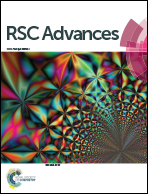A depth-suitable and water-stable trap for CO2 capture†
Abstract
In terms of CO2 capture and storage (CCS), it is highly desired to substitute of high efficiency process for the applied one which is far from the ideal one. Physical processes cannot capture CO2 effectively, meanwhile CO2 desorption is energy-intensive in chemical processes. Herein, a depth-suitable and water-stable trap for CO2 capture was discovered. Carboxylates can react with polybasic acid roots by forming united hydrogen bonds. Carboxylate ionic liquid (IL) aqueous solutions can absorb one equimolar CO2 chemically under ambient pressure, and its CO2 desorption is easy, similar to that in physical absorption/desorption processes. When used as aqueous solutions, carboxylate ILs can replace alkanolamines directly in the applied CCS process, and the efficiency is enhanced significantly due to the low regenerating temperature. CO2 (or polybasic acids) can be used as a polarity switch for ILs and surfactants. A new method for producing carboxylate ILs is also proposed.



 Please wait while we load your content...
Please wait while we load your content...